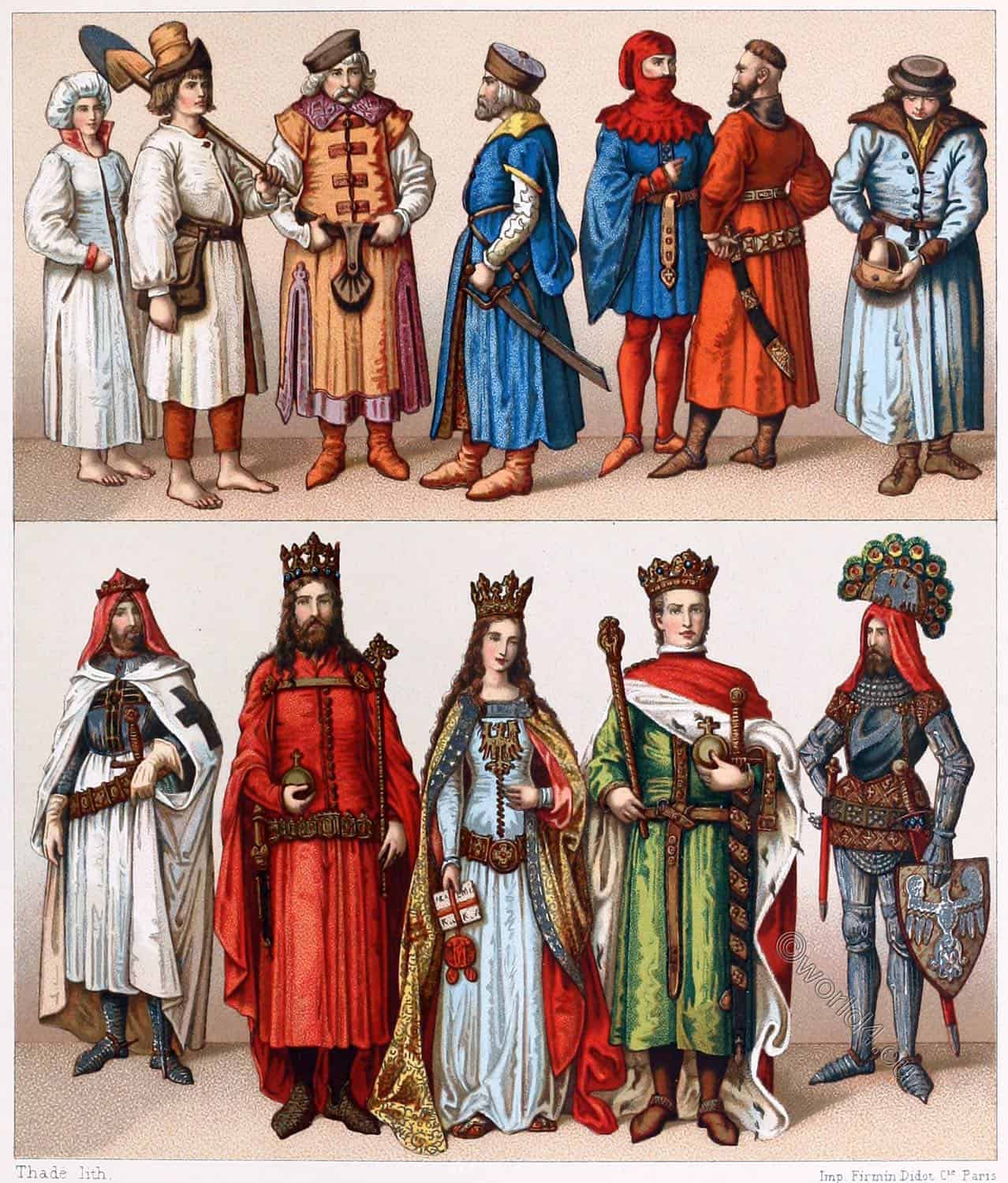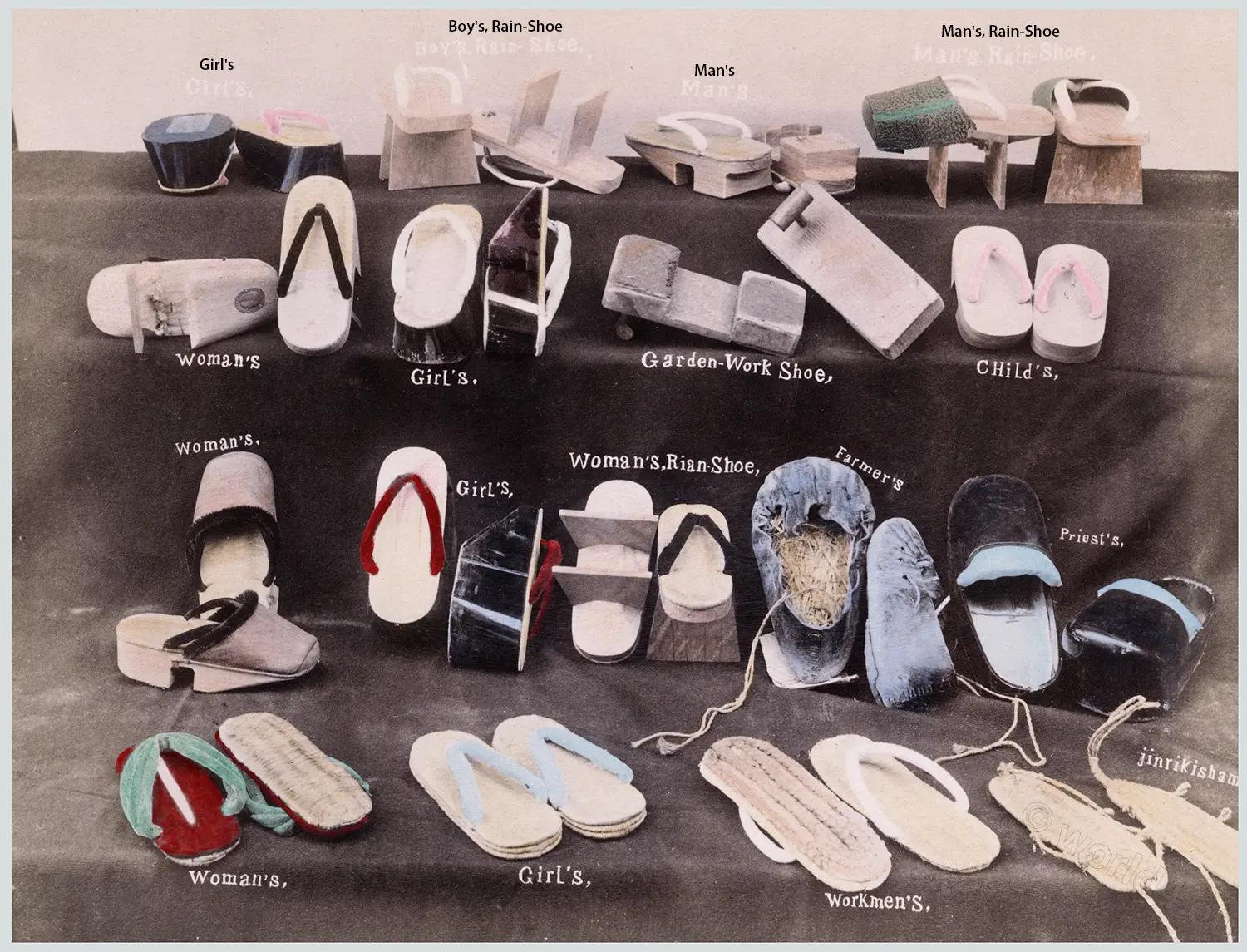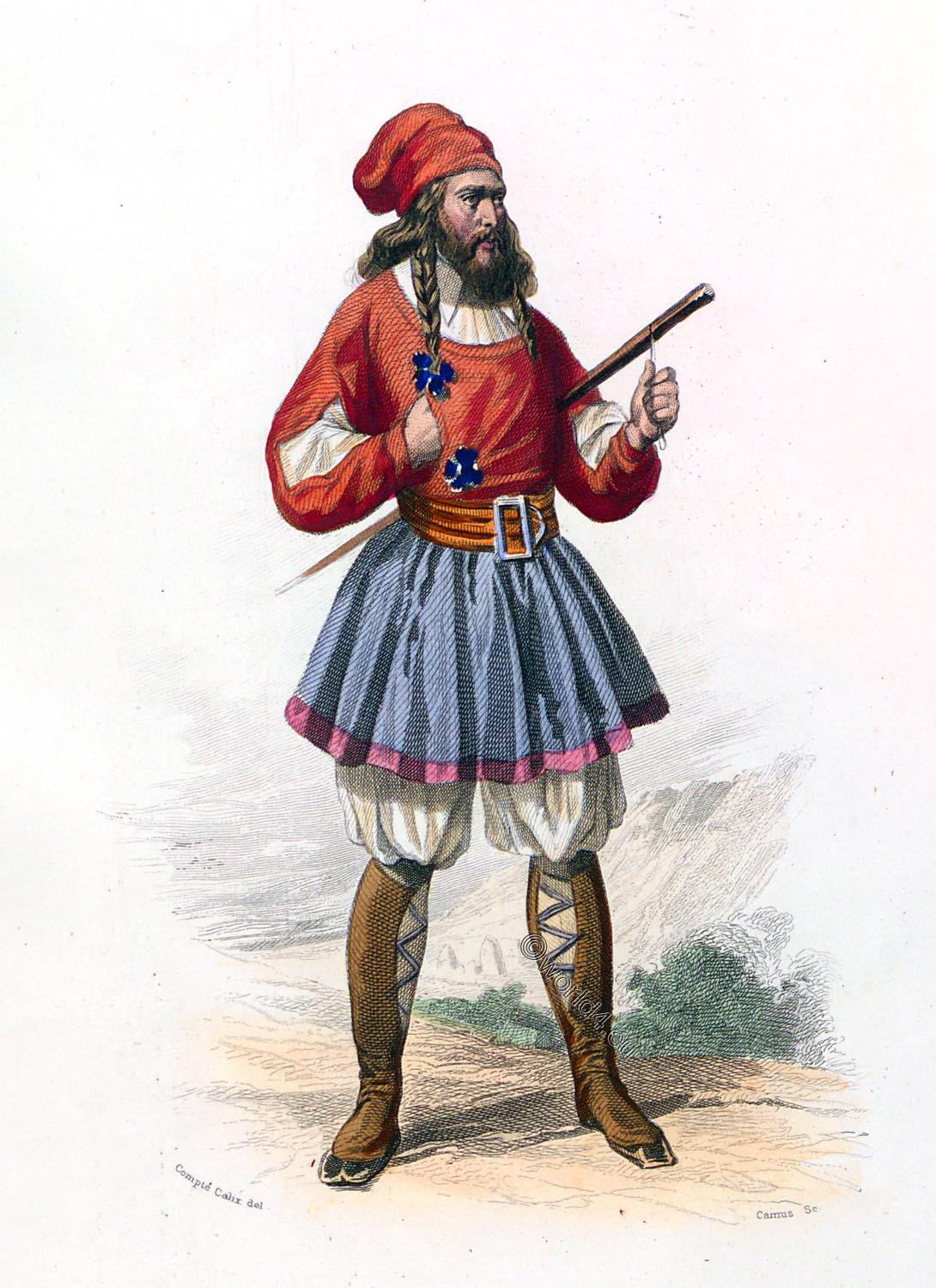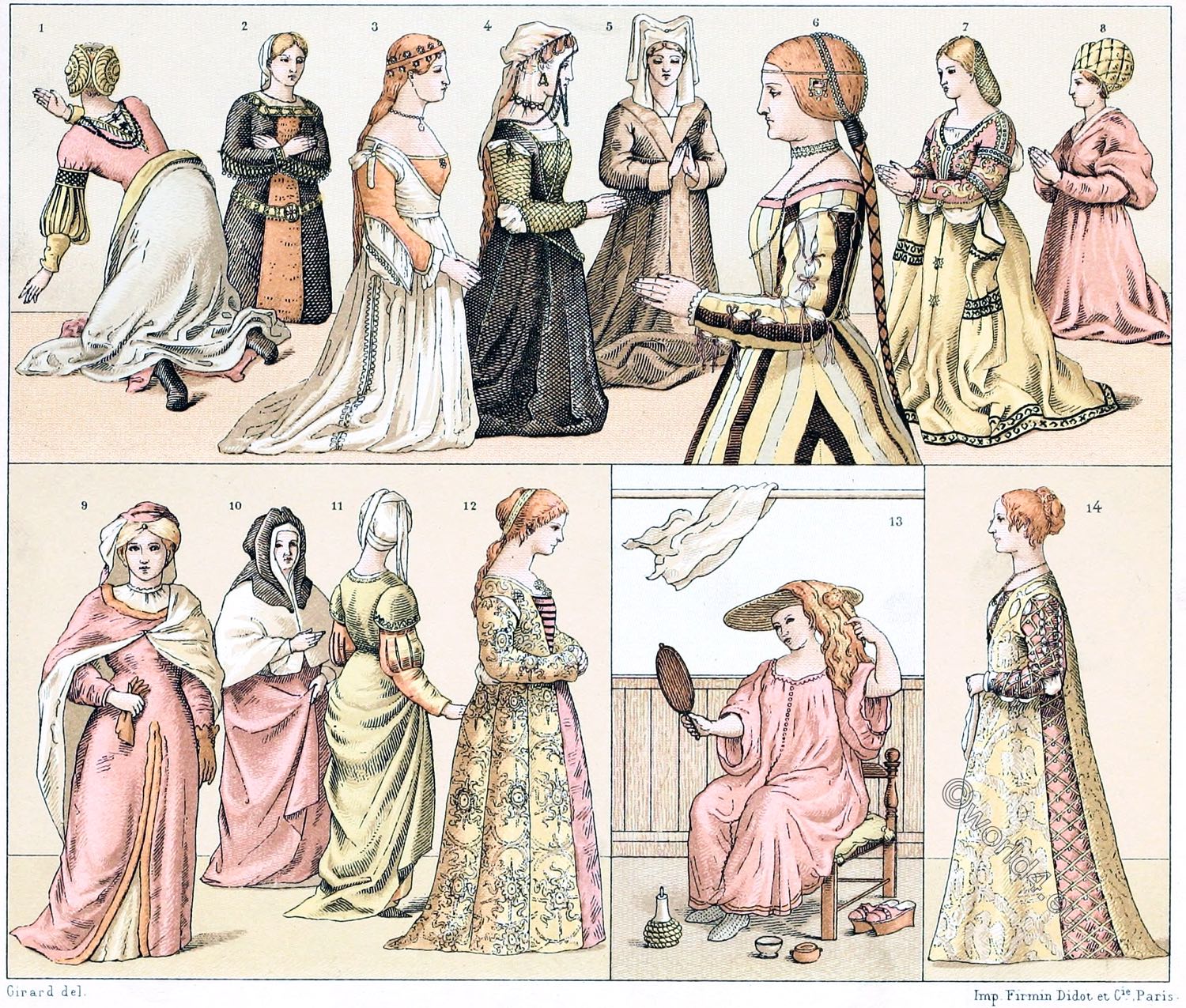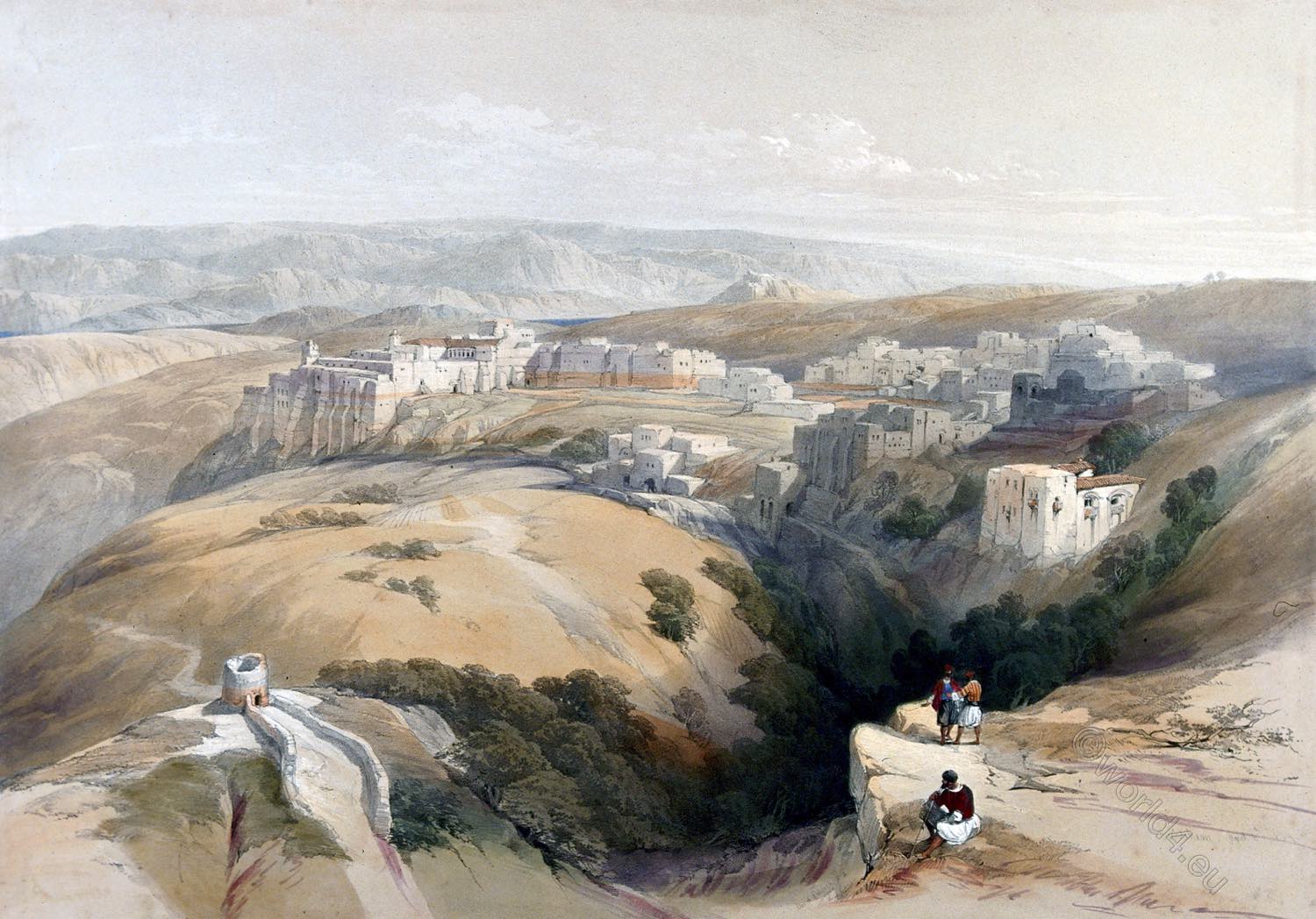
IMPLEMENTS OF PUNISHMENT.
Fig. 1. MASK OF PUNISHMENT; chiefly employed for the correction of minor offences by exciting ridicule against the wearer, and frequently placed on soldiers for breach of discipline. It is formed of bands of iron, which fold over the head, and are fastened behind by a padlock; a pair of spectacles and ass’s ears are attached; a double plate closes over the mouth, and a whistle passes up the nose; producing a loud sound should the wearer attempt to speak. The mask is painted a flesh-colour, the eyebrows and ears are shaded with dark grey, and a mouth is delineated upon the plate covering the lower part of the face. It was obtained from the old castle of Nuremberg.
Fig. 2. BRAND for a felon. The mark it occasions is that of the gallows and wheel, the ordinary capital punishments of the period; it is here engraved of the original size. It was obtained at Bamberg in Bavaria.
Fig. 3. THIEF-CATCHER. It is formed of steel, set with spikes, and having springs to the upper part. It was affixed to a pole, and used by the police to secure a runaway prisoner, by pushing the springs against the neck or leg, allowing either to slip within the spiked ring, from which they could not be easily extricated without assistance. It was obtained at Wurtzburg, in Bavaria, where they were in use at the early part of the seventeenth century.
We engrave a curious figure of an officer about to make a capture with one of these implements, from “Neder-landtsche gedenck-clanck.” Harlem 1626.
Fig. 4. PINCERS, of steel. They were used to brand and punish slaves in the Spanish West Indies.
Fig. 5. THUMB-SCREW, of iron, the side bars surmounted by acorns, the cross bars are considerably bent, and indicate that this implement had been frequently used with vigour. It was obtained at Nuremberg.
Fig. 6. COLLAR, of iron, set with steel spikes, so that they press on the shoulders and lower part of the face; within the collar are springs set with smaller spikes. Its weight is great, and its extreme cruelty apparent.
Scale; one-fourth the original size.
Source: Miscellanea graphica: representations of ancient, medieval, and renaissance remains in the possession of Lord Londesborough. Contributor: Frederick William Fairholt, 1857.
Related
Discover more from World4 Costume Culture History
Subscribe to get the latest posts sent to your email.

